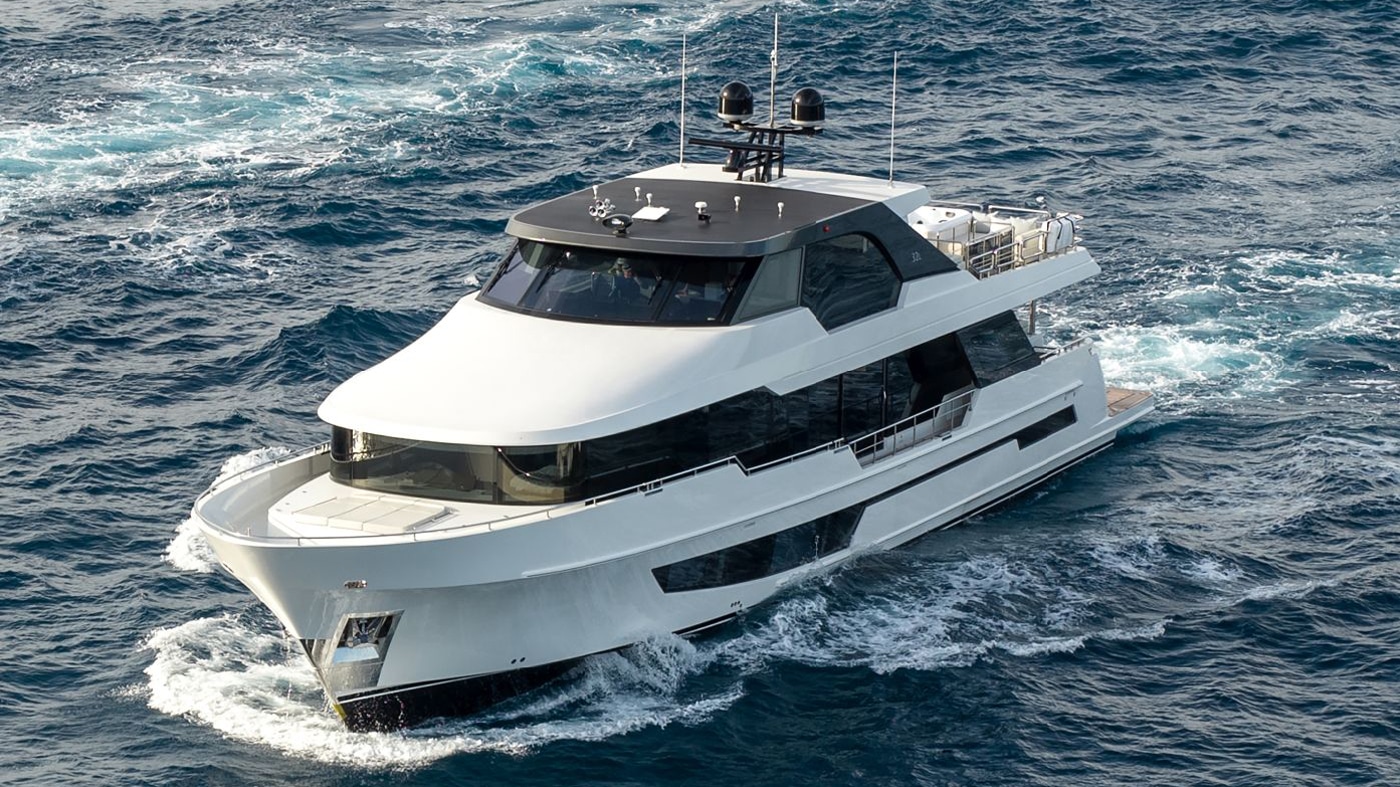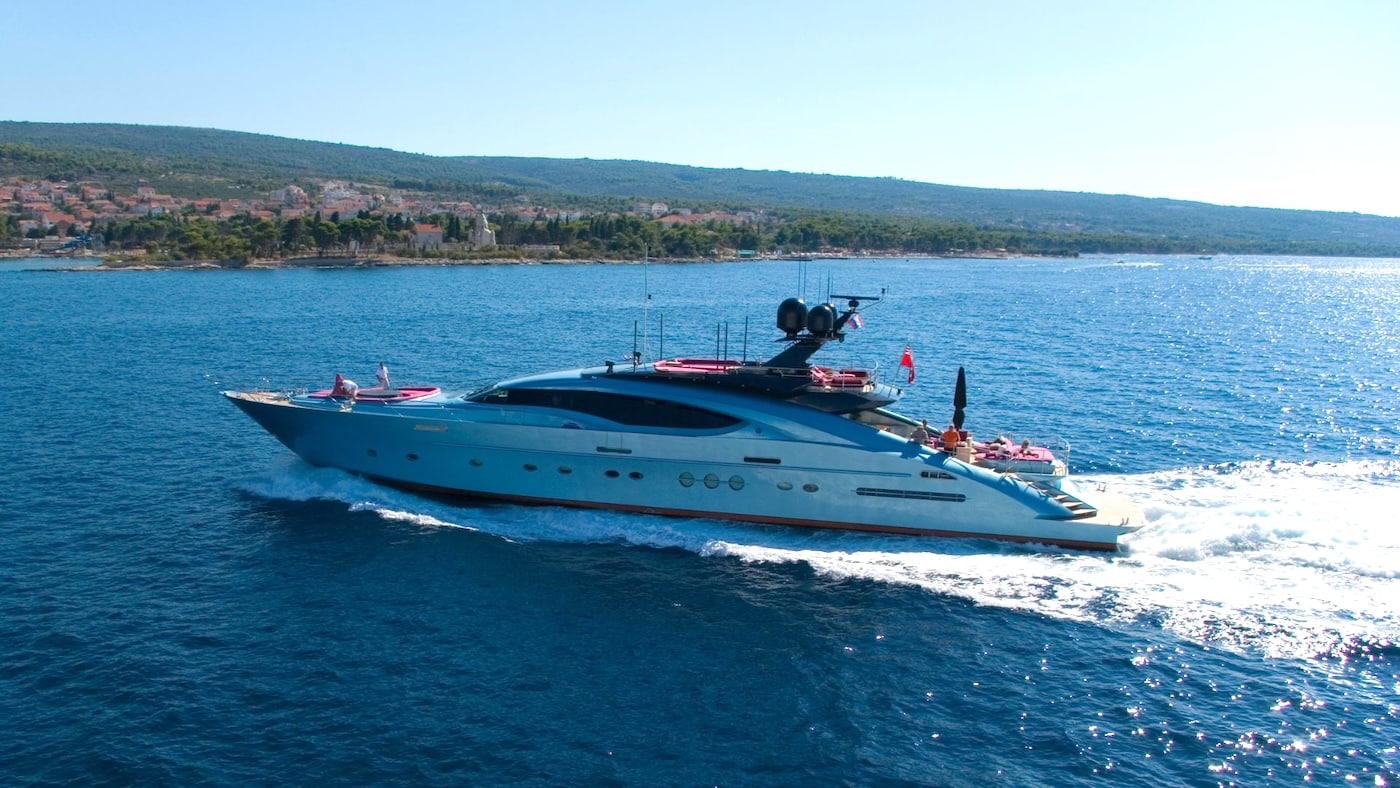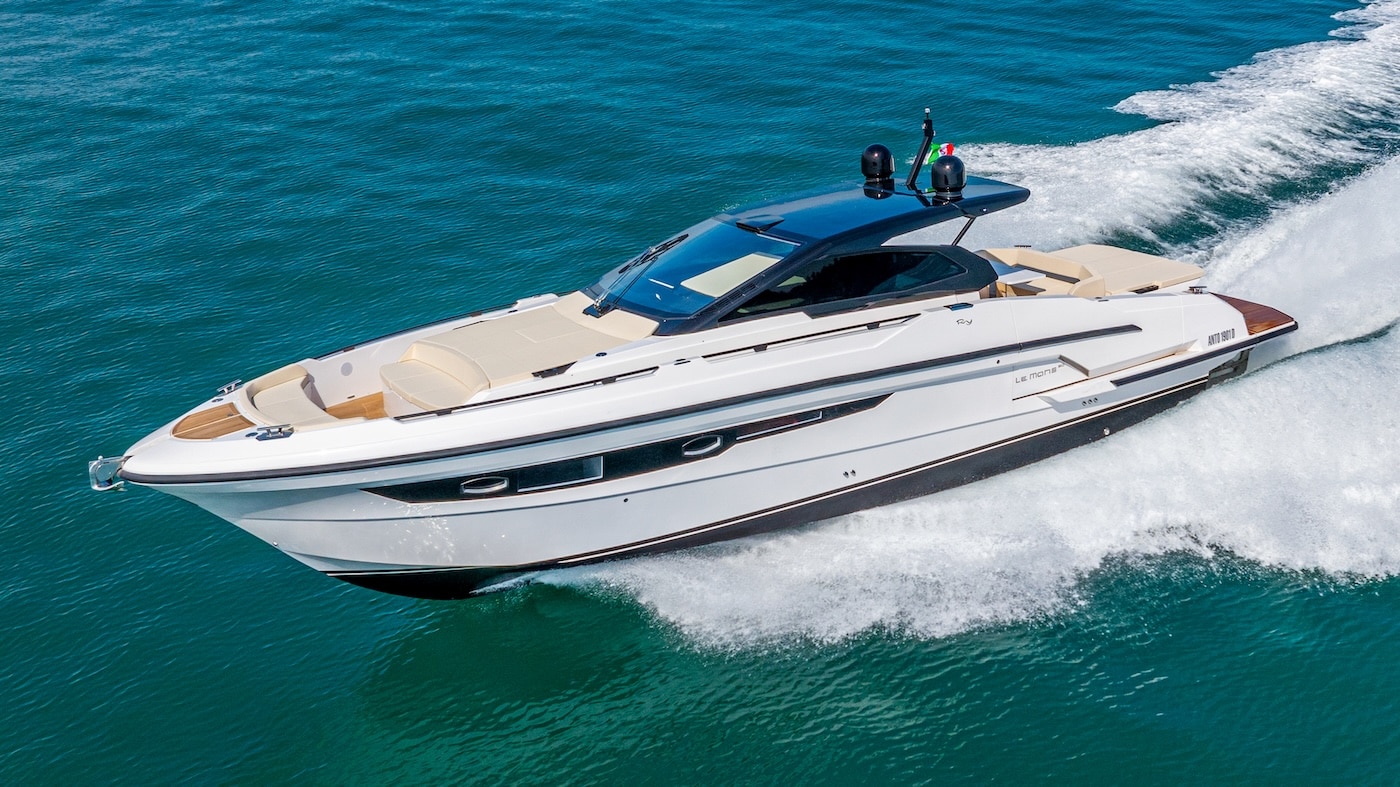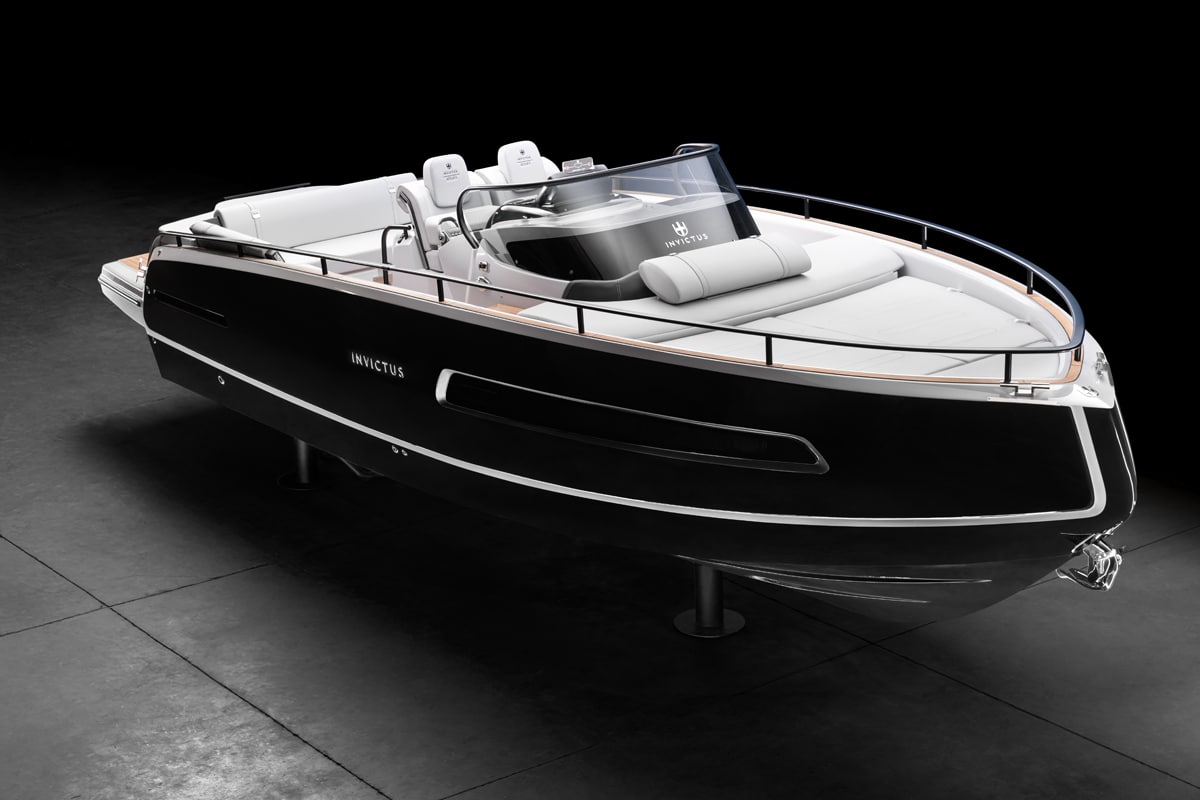It could have been the pleasure to be arrived after the long crossing from La Spezia to Ibiza, which rouse in us an extreme desire to land , and probably also the fatigue of the trip, anyway it happen. The operation of moving the engine from the pulpit to the transom of the tender ended in the worst of the possibilities. The motor slipped outboard in the sea and sunk in a 7 meters deep water, to the bottom of the bay.

It was nighttime. The few minutes required to wear the mask and jump into the seawater, the movements of the boat and the hard darkness, no moon that night, although we have collect landmark, confused the position and it became impossible to recover it immediately. Moreover, this was a good fact, as we understand some hours later talking to the mechanic.
The rescue operation happened seven hours later, at early daybreak, when on board of the tender, in few minutes we have spotted the engine, laid at the bottom of the bay and hoisting it rapidly on board.
Next was to run to the port area where we could have found a large quantity of soft water and at the same time, the possibility to buy the oil we need.

The not immediate rescue of the engine, even if at that moment we did not know, revealed to be a positive inconvenient. The workshop mechanic, from whom we bought a large quantity of special engine oil, told us that if we would have rescued and then left it some hours in the open air, the oxidation action would have damaged the engine and this would have been irreversible.
The first worrying signal, which reduce to the minimum our hopes to recover the engine, was the fact that it seems blocked and at this point, we were ready to relinquish the sailing. The rope of the starter did not move. But when we remove the spark plug, it start to turn, because the sea water, not compressible element, had filled up the piston chamber forbidding it to move. We opened then the grille and start to wash the engine with a lot of soft water for long time.
Further, we opened the screw plug of the oil tank and emptied it. As we foreseen the oil was emulsify, we replaced it.

The fuel tank on the contrary, was perfect. Being the air valve and the device of fuel stop closed, the seawater could not penetrate. Completed the washing, cleaned with Crc, the oil and the spark plug changed, the engine started to run. However, we did not finish yet.
We wanted to check once more the oil, which we changed a second time. Even at this stage, we found that the oil was still emulsify. If we would have use the engine in these conditions, it would be a disaster.
The third oil change allows us to let the engine run for a longer time in the water and at different turns for about one hour, filling from time to time the fuel tank.We took it once more to the workshop; we change the oil for the last time checking its consistency. Ultimately, dried and cleaned, the engine was perfectly recovered and doing its job. (duty)


























One Response
I turned my dinghy over with one of these onboard Honda 2.3 air cooled ? Yes. In addition to what you have done you should take the bottom leg drive shaft and lower cover for the engine off and get to the friction clutch , I didn’t till later and found that salt water had corroded the main shaft bearing where I didn’t get fresh water in to flush it initially. Suggest you strip it down to clean dry and re_grease that bearing otherwise in a years time it will seize up.